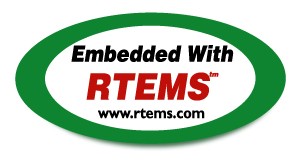


 RTEMS C User's Guide
RTEMS C User's Guide
The components of an object ID make it possible to quickly locate any object in even the most complicated multiprocessor system. Object ID's are associated with an object by RTEMS when the object is created and the corresponding ID is returned by the appropriate object create directive. The object ID is required as input to all directives involving objects, except those which create an object or obtain the ID of an object.
The object identification directives can be used to dynamically obtain a particular object's ID given its name. This mapping is accomplished by searching the name table associated with this object type. If the name is non-unique, then the ID associated with the first occurrence of the name will be returned to the application. Since object IDs are returned when the object is created, the object identification directives are not necessary in a properly designed single processor application.
In addition, services are provided to portably examine the subcomponents of an RTEMS ID. These services are described in detail later in this manual but are prototyped as follows:
uint32_t rtems_object_id_get_api( rtems_id ); uint32_t rtems_object_id_get_class( rtems_id ); uint32_t rtems_object_id_get_node( rtems_id ); uint32_t rtems_object_id_get_index( rtems_id );
An object control block is a data structure defined by RTEMS which contains the information necessary to manage a particular object type. For efficiency reasons, the format of each object type's control block is different. However, many of the fields are similar in function. The number of each type of control block is application dependent and determined by the values specified in the user's Configuration Table. An object control block is allocated at object create time and freed when the object is deleted. With the exception of user extension routines, object control blocks are not directly manipulated by user applications.
Copyright © 1988-2008 OAR Corporation